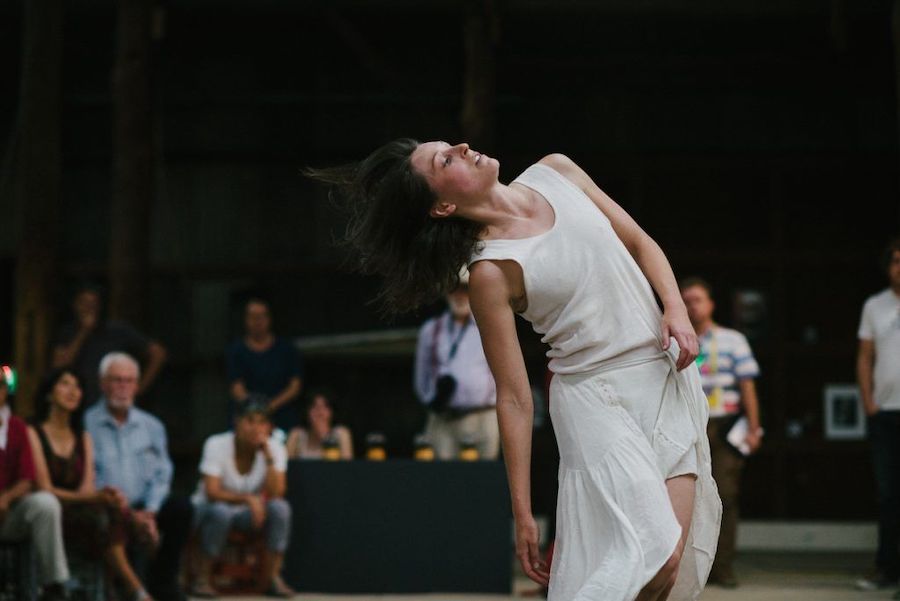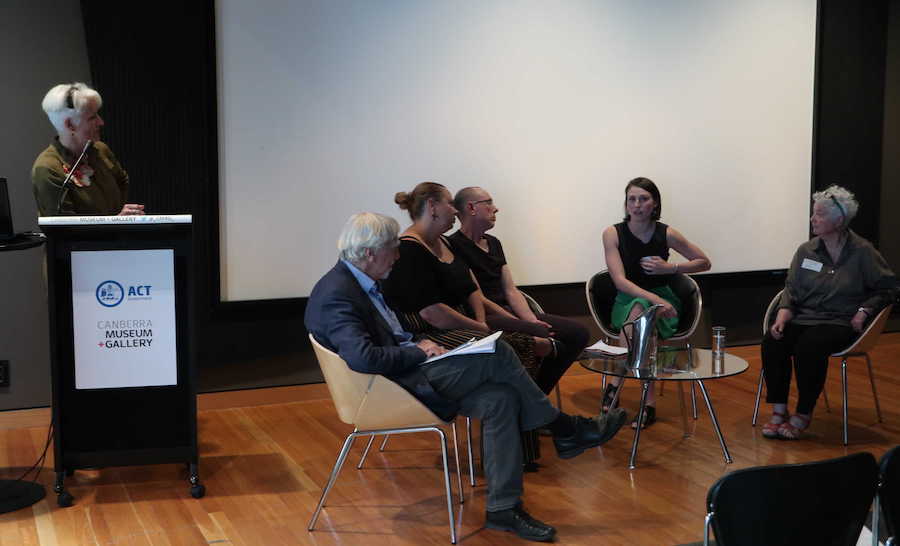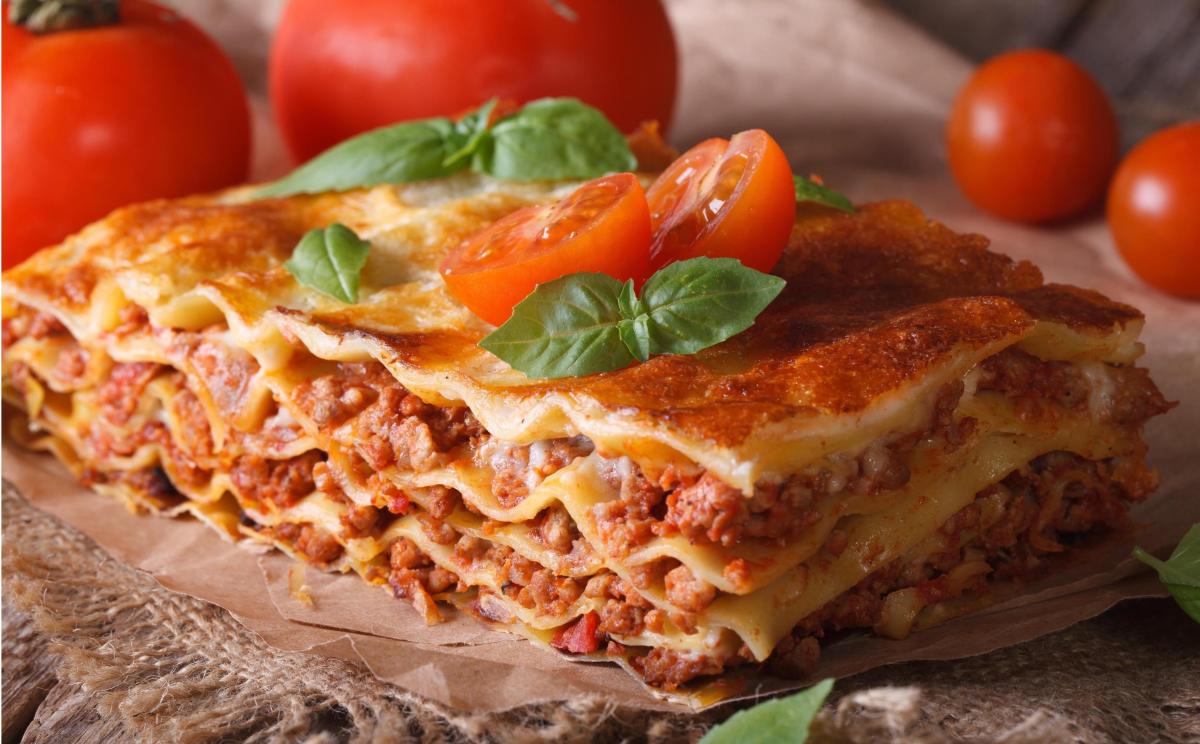What does sustainable arts practice look like? While thinking about it, I considered perhaps a framework to help me unpack what this is to me. I thought, ‘What if sustainable arts practice was a hearty, nutrient-rich lasagne that feeds us? What would the ingredients be?’
1. Passion sustains practice
Firstly, packets (plastic free of course) of L.O.V.E. and dedication. I see this as the lasagne pasta sheets that are at the base, and blankets through the dish, holding the structural integrity of the whole.
The arts is an undeniably brutal industry to work in. Not just because of financial under resourcing and societal undervaluing, but because it is deeply personal.
It requires investment and sacrifice, including financial and non-financial, to make it work. It is love, dedication and continued inquiry and experimentation in my artform that really sustains me, otherwise I wouldn’t do it.
For me this manifests through ongoing research in the practice of choreography, performance, interdisciplinary collaboration and working with young people.
 Alison Plevey performing. Image supplied courtesy the artist.
Alison Plevey performing. Image supplied courtesy the artist.
2. Collaboration is the sauce
The second ingredient for this sustainable arts practice lasagne is two cups of collaborative relationships and networks. This is the sauce, the liquid in the dish, and it connects us to opportunity, support and longevity to an arts career.
Innovation in arts exists as part of a network/arts community, that we are more together by utilising and catalysing the skills, resources and ideas of a community.
Within the Australian Dance Party (ADP) we are enabled by collaborations with the National Institutions, with musicians from Canberra Symphony Orchestra (CSO), partnerships for Danceweek, or in our Move to Zero project with ACT Environment, to outside of dance with festivals in collaborations with Design Canberra.
These relationships are key, and we can also do them better! To think and act beyond the arts sector may open up new potential for where the arts ‘belongs’ and what arts ‘does’.
3. A non-arts cook up
The third ingredient is one cup of interconnections with so called non- arts. These connections foster creative experimentation and practice beyond our style/habits and expand audiences, and therefore opportunity and financial stability.
Seeking ways to find the broader links, such as how, where and for whom the work can affect and be relevant, can be exciting and motivating.
It also presents a great challenge for artists to extend into foreign spheres, often within non-inviting frameworks, whilst holding onto artistic vision and integrity in practice.
Examples of non-arts connections are wide, from health to science to education. One particular opportunity is to better harness the increasingly large tourism visitation and growing population. Here in Canberra it is projected to grow by 23% in the next 12 years.
How can artists engage with these transient audiences much more successfully than we currently do, to sustain us?
4. Add non-financial resources into the mix
The fourth ingredient is a bunch of freshly picked non-financial resources, such as space to practice.
For ADP this year, we have begun a weekly company-wide practice to discuss things; training, evolving our dynamic as a collaborative, fertility of new ideas and opportunity – sharing and exchange of creative concerns.
All these are vital to the experience of our dance company and the impact that we have more broadly in the community.
This has come about from the simple fact that we can meet in a place on a regular basis, enabled by the support of QL2 Dance hosting us, without the financial hurdle of paying for space to do so.
Other non-financial resources may be peer support and mentoring, producing support, and as in my case, a retired father who spends a hell of a lot of time running around and doing jobs that I don’t have time or energy to do.
5. Aspirational thinking sits atop everything
The cheese on top of this lasagne is aspirational thinking about the value and importance of the arts from a leadership level. This makes everything else taste really great – it inspires and blends with all the other ingredients and brings out the best in them.
Leadership from the top, perhaps in the form of a strong, responsive, ambitious, arts and cultural policy and strategy would, for artists and for our entire Australian identity, make the lasagne sing.
The method for a sustainable practice
Now we come to the actual cooking of those ingredients for sustainable arts. We need the oven, the knives, the dish – in other words, the tools and financial support for the ingredients to come together and bake.
These tools should be provided by government, business or other sectors such as tourism and individuals. It is best to have a diversity of tools, that fully harness the ingredients to feed artists and feed the community.
The assemblage of the lasagne could all be measured and guided by a consideration of First Nations’ approaches to arts, intergenerational practices, and by considering the bigger picture of history and legacy – of what we are creating beyond ourselves.

Childers Group Forum discussing sustainable arts practice, November 2019. L-R: Genevieve Jacobs, David Throsby, Krystal Hurst, Nigel Featherstone, Alison Plevey, Chrissie Shaw. Image supplied.
Serving suggestions on how arts business impacts arts practice
The business side of arts is a difficult and important balancing act.
I have had to learn how to be a Company Director/Business Manager as well as a creative leader and actor. In finding my feet with these roles, it has been too much to carry in many instances – to balance my creative and artistic vision with the energy and headspace that I want to bring to the dance floor, the actual arts work, and my mental health – all decreased in quality because of the load of the business side.
I am not alone in this juggling act. Because of the economic environment in which we exist, artists are in an unrelenting paddling act to keep afloat financially to enable the making of artistic work, and then to survive from it.
To me sustainable arts practice is currently threatened by:
- Lack of leadership, ambition and valuing of why arts is important in our society from a policy and also a ‘mainstream’ community level – stemming from the absence of a federal arts and cultural policy.
- Deterioration of funding from all levels of Government, particularly an imbalance in the small to medium sector, and lack of dedicated support for arts advocacy bodies.
- A reduction of private sector support and support from arts, consumers and audiences.
- Retracted investment in emerging artists, and a loss of program priorities for young and emerging artists.
- Burn out of artists operating with too many hats for not enough personal, artistic and financial reward, where it becomes, quite frankly, too hard.
- Climate change.With this threat I fear that the arts will not be harnessed as a tool for problem solving, imagining new possibility and social unity in a time of crisis, but instead dismissed as irrelevant.
The question of finding sustainability in the arts is a personal one – different tasting lasagnes for different artists. But there are key ingredients that we can’t go without, and need to give care and attention to make it taste great.
As a recent article by David Pledger pointed out, where he compared Australia’s arts and cultural funding climate with the plight of the Murray Darling Basin, how can we avoid ‘more dead fish’.
This is an edited version of a paper presented by Alison Plevey at the Childers Group Forum: Sustainable Arts Practice 1 November 2019, in Canberra.




